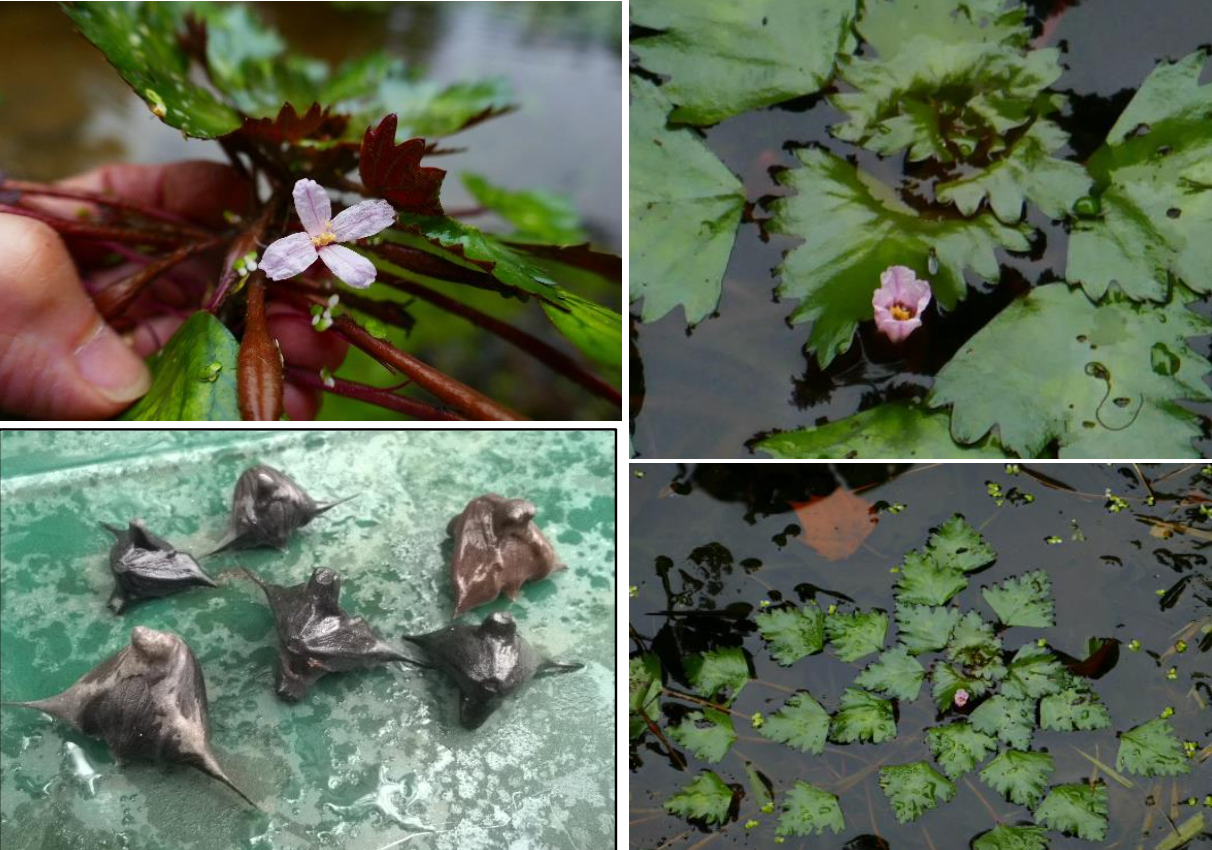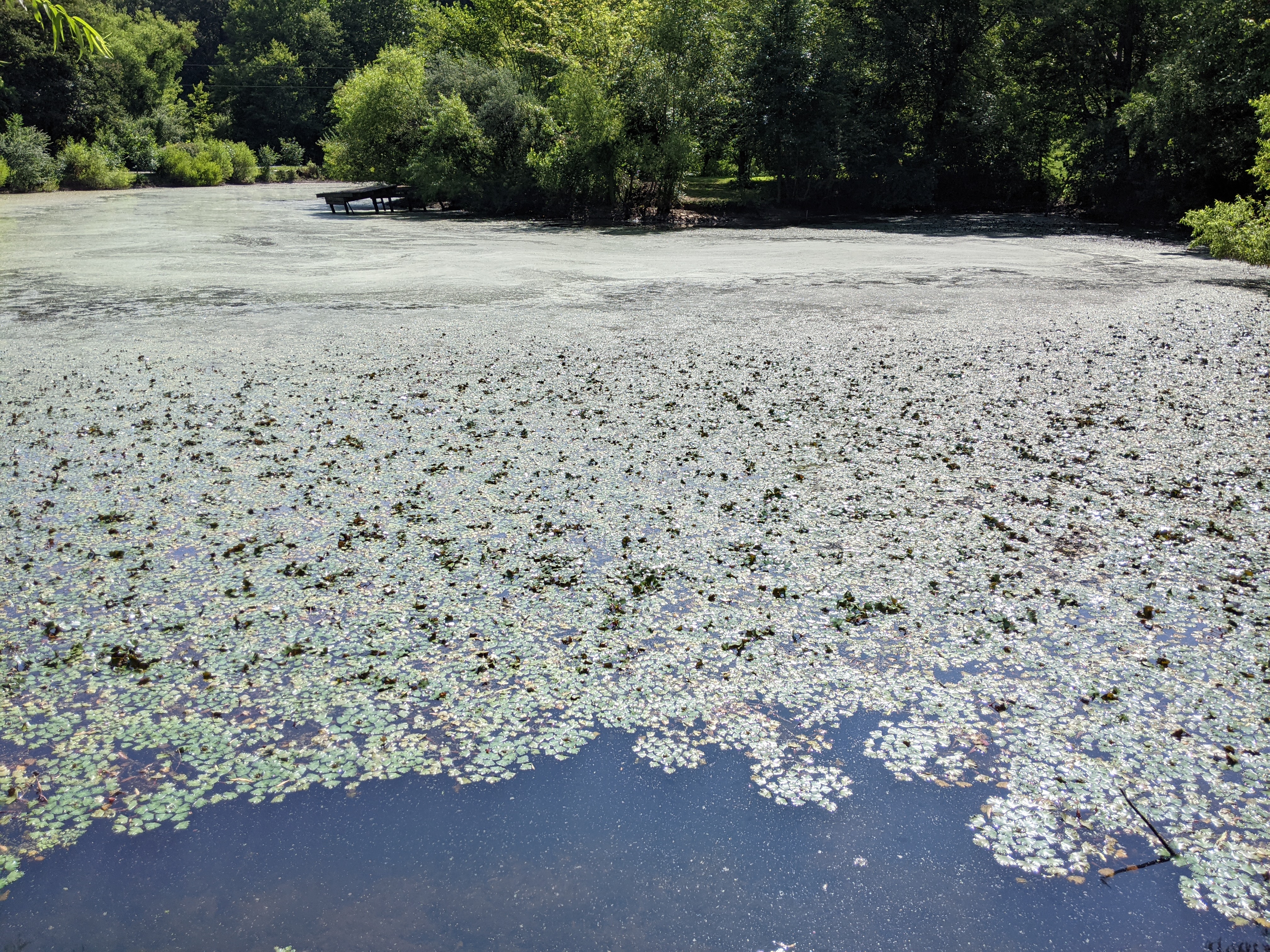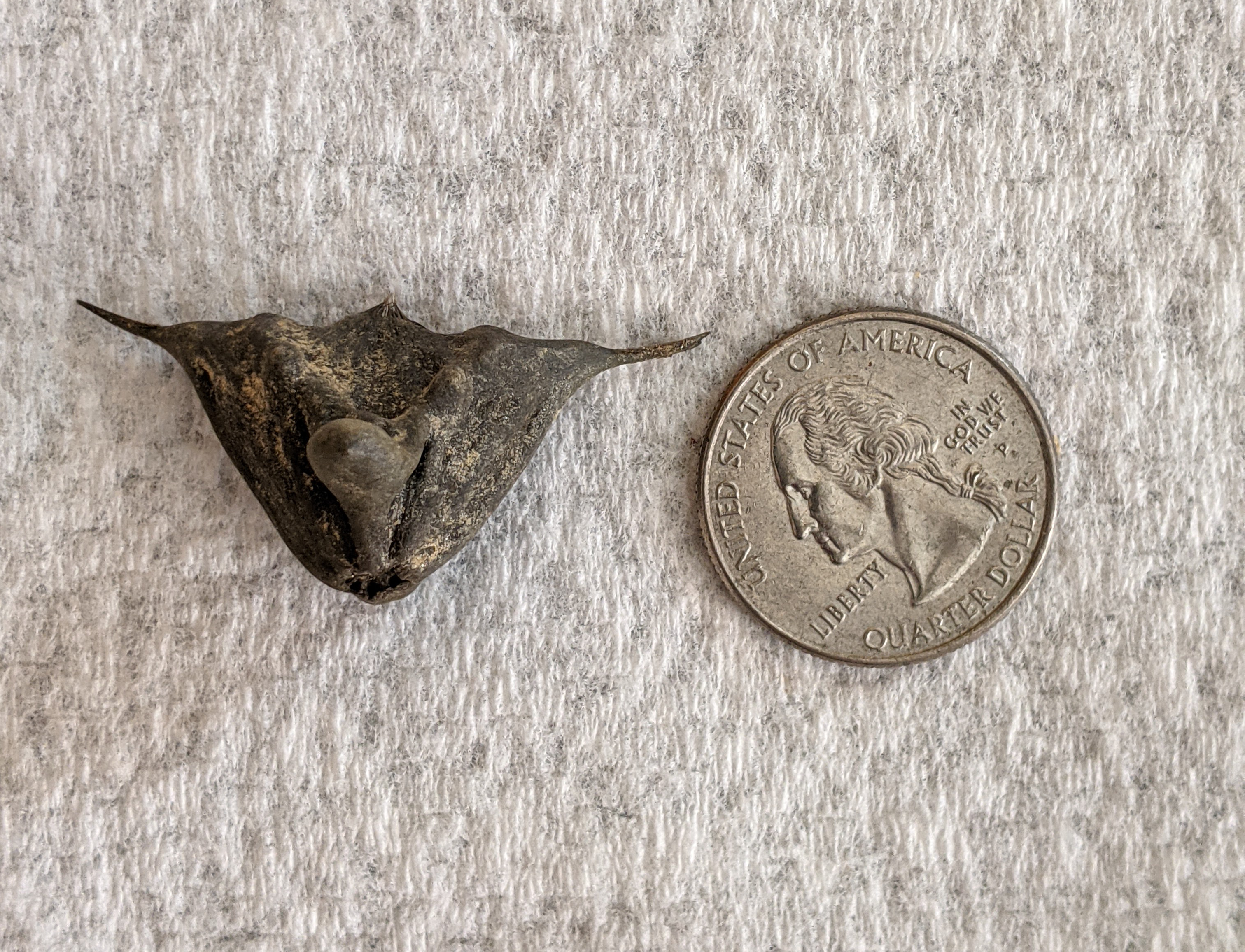
Early Detection Invasive Plant Species of Virginia
Two-horned Trapa
(Trapa bispinosa)

Two-horned water chestnut flower, fruit, and leaves. Photos by Blythe Merritt.
What's the harm?
Two-horned trapa readily invades freshwater habitats such as ponds, lakes, and slow-moving streams. Like the better known Eurasian water chestnut (Trapa natans), two-horned trapa can form dense mats on the surface of a waterbody, choke out native submerged aquatic vegetation (SAVs) and other plant species, and reduce the navigability of waterways.

What is it?
An annual aquatic plant species that roots in shallow freshwater habitats such as ponds, lakes, and slow-moving streams.
Where's it from?
Two-horned trapa is native to Taiwan.
How did it get here?
Unknown. It may have been introduced intentionally for horticultural use, by edible plant enthusiasts, or by accident. The earliest known population in Virginia was discovered in 2014. Herbarium specimens discovered to be mislabeled date to 1999.

Where is it now?
At present, in North America two-horned trapa is it is only found in Virginia at over 70 sites in five Virginia counties: Fairfax, Prince William, Loudoun, Fauquier, and Charlotte. Waterfowl, particularly Canada Geese, are known to move the seeds to new habitats.
See the two-horned trapa map dashboard here >> The dashboard map allows a user to zoom in on an area and see known locations and risk levels for nearby waterbodies.
What's being done?
Removal has begun at several sites. Funding is being sought to conduct further control. Federal funding has been earmarked for surveys, mapping, and outreach. The Two-horned Trapa Task Force--comprised of local, state, and federal agencies, and citizen groups--was formed to coordinate activity aimed at eradicating two-horned trapa in Virginia. In the summer of 2022, the task force completed a two-horned trapa management plan, which you can find here >>.
How do I report a sighting of these species?
You can choose from several ways to report sightings of an invasive species here >>
How can I learn more?
Two-horned trapa management plan >>
See more information, photos, and an interactive map here >>
 Virginia Invasive Species
Virginia Invasive Species